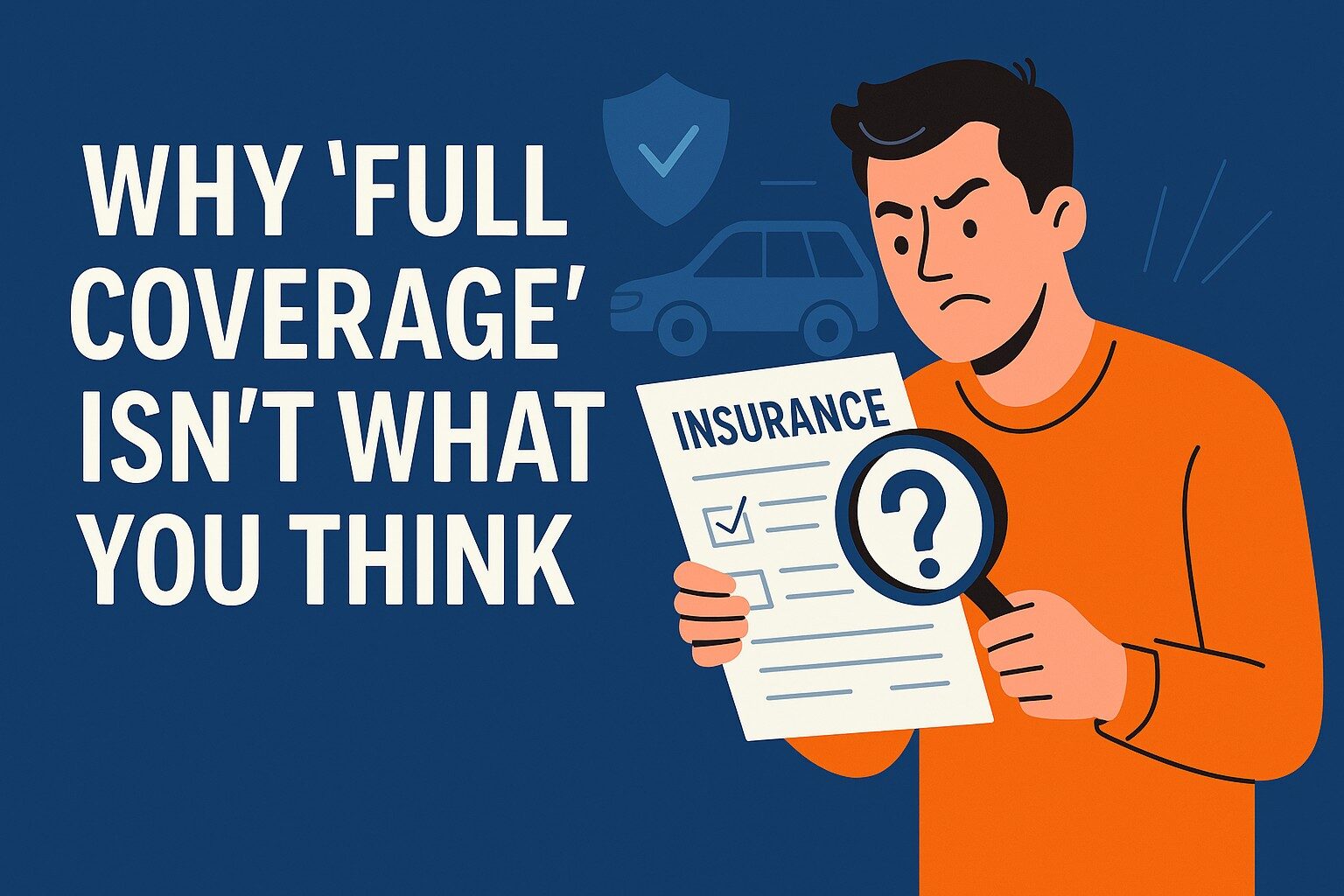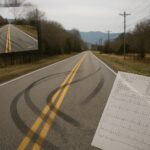You pay your premium every month and your agent says you’ve got “full coverage.” Then a crash happens and you learn your policy doesn’t pay for a rental car, or the other driver has no insurance, or you still owe money on a totaled car. “Full coverage” sounds complete, but it isn’t a legal term and it doesn’t mean the same thing to everyone.
What “full coverage” usually means
There’s no standard policy called “full coverage.” State insurance regulators and the NAIC point out that people use the phrase loosely. In plain English, most folks mean a policy that has liability, collision, and comprehensive coverage. Lenders also use “full coverage” to mean you must carry collision and comprehensive if your car is financed. That still leaves other important protections out.
Liability pays others if you cause a crash.
Collision helps repair your car after a crash with another vehicle or object.
Comprehensive covers non‑crash damage like theft, hail, flood, fire, or hitting a deer.
Quick takeaway: “Full coverage” is not a legal label. It’s a shorthand for a few core coverages, not a guarantee that everything is covered.
What “full coverage” usually does not include (unless you add it)
These are common gaps that surprise people:
Uninsured/Underinsured Motorist (UM/UIM). Protects you if the at‑fault driver has no insurance or not enough. In Tennessee it’s offered by default and can only be rejected in writing, but it isn’t what people mean when they say “full coverage.” Check your declarations page to confirm.
Medical Payments (MedPay). Helps with medical bills for you and your passengers regardless of fault. Optional in Tennessee.
Rental reimbursement. Pays for a rental car while yours is being repaired after a covered claim. Optional add‑on.
Roadside/towing. Covers towing, jump starts, lockouts. Optional.
GAP (Guaranteed Asset Protection). If your car is totaled and you owe more than it’s worth, GAP can cover the difference. It’s optional and often sold by lenders or dealers.
Tennessee’s minimums are not “full”
Tennessee’s financial responsibility law requires at least $25,000 per person for bodily injury, $50,000 per accident for bodily injury, and $25,000 for property damage. That’s only the legal minimum, not comprehensive protection for you. Many drivers carry higher limits and add UM/UIM, MedPay, and other options to avoid big out‑of‑pocket costs after a serious crash.
A simple way to read your policy
Open your Declarations Page (the one‑pager that lists each coverage and limit). Look for these lines and what they say next to them:
Liability BI/PD (your limits, like 100/300/100)
Collision (with deductible)
Comprehensive (with deductible)
UM/UIM Bodily Injury and Property Damage (limits or “Rejected”)
Medical Payments
Rental reimbursement
Towing/Roadside
GAP (if purchased through your insurer, sometimes shown on lender docs)
If you do not see a line item, you probably do not have that coverage. The NAIC’s consumer guide and shopping tool explain how to use the declarations page and what each coverage does.
Two quick scenarios
1) Totaled car with a loan Your car is worth $18,000 after a crash, but you still owe $23,000. Standard insurance pays up to the car’s value, so you are $5,000 short unless you have GAP.
2) Serious injuries and the other driver has state minimums The at‑fault driver has 25/50/25. Your medical bills are $60,000. Their insurer might pay $25,000, and your UM/UIM would be the next place to look for coverage. “Full coverage” in the collision/comprehensive sense does not fill that gap.
What to do before your next renewal
Match UM/UIM limits to your liability limits, or as close as budget allows.
Pick deductibles you can actually afford on short notice.
Add rental reimbursement if you cannot be without a car for work or family.
If you have a loan or lease, consider GAP until your loan balance is safely below the car’s value.
Plain‑English summary
“Full coverage” is not a promise. It usually means liability, collision, and comprehensive. It often does not include UM/UIM, MedPay, rental, roadside, or GAP unless you add them. Tennessee’s legal minimums protect others, not you. A few smart additions can make the difference between a stressful shortfall and a smoother recovery. [NAIC+2NAIC+2
Conclusion
If you or a loved one was injured in a crash, we’re here for you. We’ll listen, explain your options in plain English, and help you take the next step.
Call 615‑244‑2111 or reach out through our online contact form.
Because we care,







